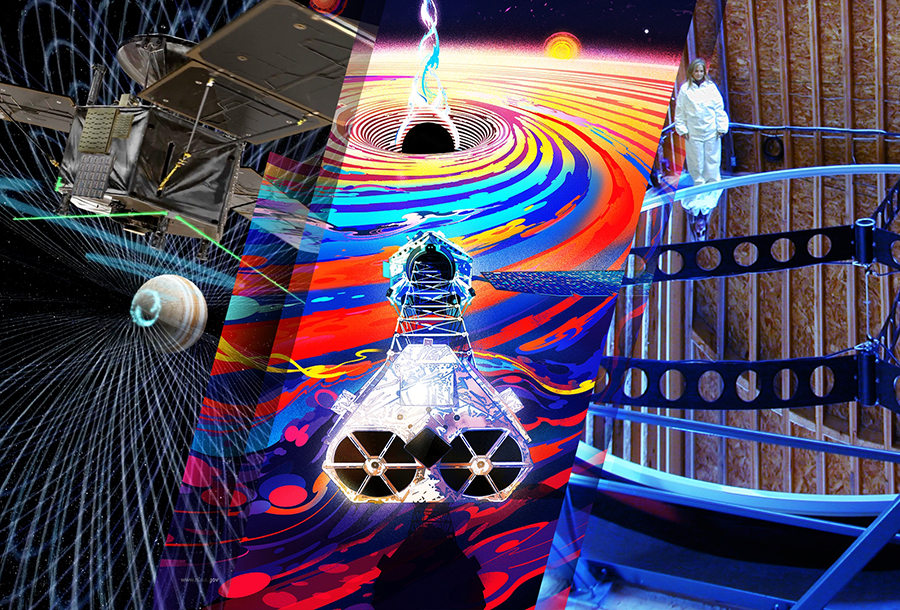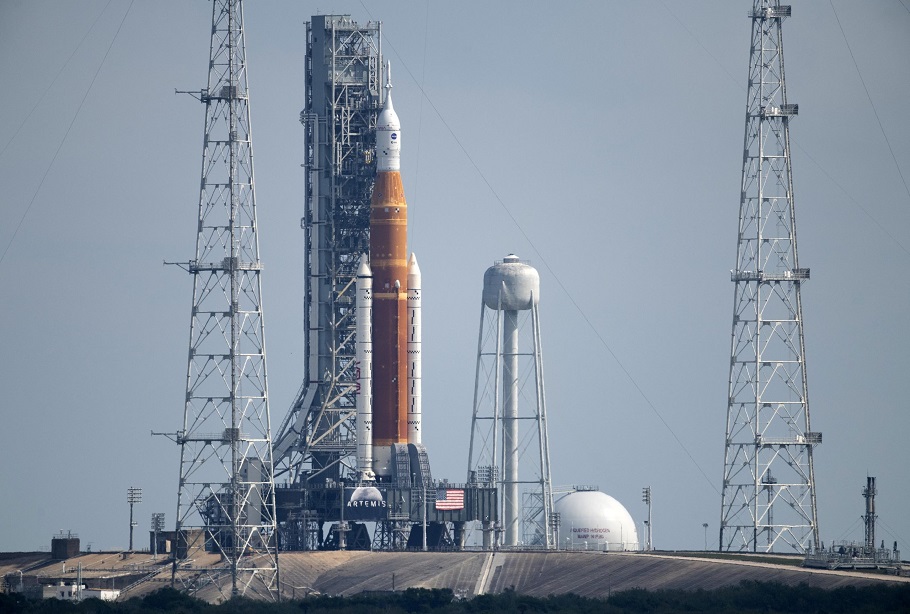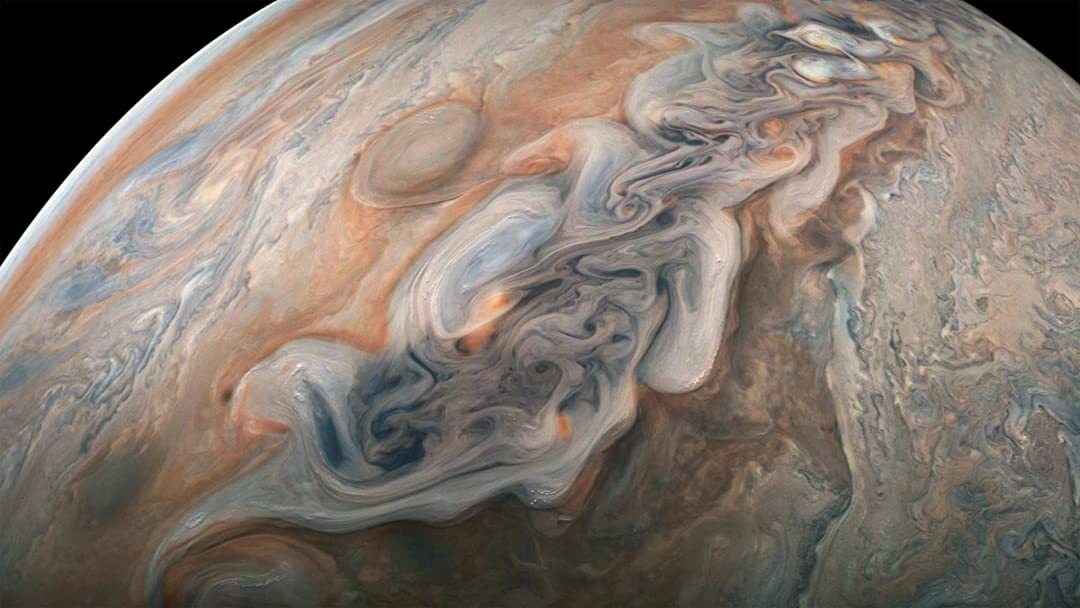Selection of the most interesting space news for breakfast: According to scientists, women may be better suited for long-term space missions. Young Jupiter “gobbled up” a bunch of embryos of planets, and NASA lost two satellites to monitor hurricanes at launch.

NuSTAR X-ray Observatory celebrates its tenth anniversary
The NuSTAR observatory is designed to register hard X-ray radiation with photon energy in the range from 9 to 79 keV. It was launched by a Pegasus XL rocket on June 13, 2012 and placed into a 600-kilometer near-Earth orbit, where it remains to this day. By NASA standards, NuSTAR is a relatively low-cost project. The device cost NASA USD 180 million, its mass (when refueled) is 360 kg. The main feature of the technical design of NuSTAR is a 10-meter mast, which was deployed after entering orbit. There are two telescopes at its ends. Due to this solution, the designers were able to increase the sensitivity of the observatory a hundred times compared to its predecessors.
Launch of the TROPICS-1 mission ended in failure
The TROPICS-1 mission, in which the Rocket 3.3 small rocket built by Astra Space was supposed to put two NASA cubesats into orbit, failed due to premature engine shutdown. As a result, the carrier failed to gain the first space speed and fell into the ocean.
Market News

NASA to Discuss, Conduct Test to Prepare for Artemis I Moon Mission
NASA is targeting Saturday, June 18, for the beginning of the next wet dress rehearsal test of the agency’s Space Launch System (SLS) rocket and Orion spacecraft at the Kennedy Space Center in Florida with tanking operations on Monday, June 20. During the test, the launch teams will rehearse operations to load propellant into the rocket’s tanks, conduct a full launch countdown, demonstrate the ability to recycle the countdown clock, and drain the tanks to give them an opportunity to practice the timelines and procedures they will use for launch.
GAO finds CASIS not making full use of advisory committee
The nonprofit that runs the national laboratory portion of the International Space Station is not making full use of the advisory group established after an independent review of the organization. A report published by the Government Accountability Office said that the Center for the Advancement of Science in Space (CASIS), which manages the resources of the ISS designated as a national laboratory, was not providing its User Advisory Committee (UAC) with information on how the lab was being used or seeking input from the committee on resource allocations.
US Space Force bought eight ULA and SpaceX launches
As part of the second phase of the NSSL (National Security Space Launch) program, the US Space Forces issued eight launch contracts totaling USD 846 million. Five of them went to the launch operator ULA (a joint enterprise of Boeing and ULA), three to SpaceX.
DoD space agency to acquire 10 satellites for experiments in low Earth orbit
The Space Development Agency is looking to acquire as many as 10 satellites to host military payloads for experiments in low Earth orbit. This new procurement of satellites – known as the NExT experimental testbed – replaces a previous SDA program called T1DES announced last fall.
Xenesis signs launch pact with Evolution Space
Launch startup Evolution Space signed a memorandum of understanding to launch a small satellite constellation for optical communications startup Xenesis. Under the $120 million deal signed in May, Evolution will conduct five suborbital and 25 orbital launches for Xenesis beginning in 2025. Mojave, Calif.-based Evolution is taking an iterative approach to developing small solid rockets to deliver 250 to 450 kilograms to low-Earth orbit.
Interesting

Young Jupiter Gobbled Up a lot of Planetesimals
Based on data from the Juno spacecraft, scientists concluded that a large mass of metal is hidden in the depths of Jupiter. It was brought there by planetesimals — the embryos of planets that the gas giant gobbled up at the beginning of history. Previous studies of Jupiter have shown that it mainly consists of hydrogen and helium. However, Juno studies show that the deep layers of the planet contain metals in an amount equivalent to 11 to 33 Earth masses.
The world’s largest liquid mirror telescope got started
Recently, the International Liquid Mirror Telescope (ILMT) was commissioned, which operates on Devasthal Peak, a 2,450 m high mountain located in the central part of the Himalayas. Unlike traditional telescopes, ILMT uses a rapidly rotating 4-meter mirror coated with a layer of mercury to capture cosmic light. The telescope is designed to observe the sky and detect objects such as supernovae, gravitational lenses, space debris, asteroids and other transient and variable phenomena.
Women in simulated space missions demonstrate more sustainable leadership
A new study based on Mars Desert Research Station commanders’ reports reveals differences in female and male leadership behavior. Although both genders are task-focused, women tend to be more positive. The genders also differ in their approach toward their team—while men focus on accomplishments, women emphasize mutual support. According to the author of the study, Inga Popovaitė, a sociologist at Kaunas University of Technology (KTU) in Lithuania, the findings suggest that women may be better suited for long-term space missions.
China releases new geologic map of Moon
According to the Chinese Academy of Sciences (CAS), China has released the world’s first geological map of the Moon at a scale of 1:2,500,000. The map includes 12,341 impact craters, 81 impact basins, 17 rock types, and 14 types of structures, providing important basic information for scientific research, exploration planning, and landing site selection of the Moon.
Read also: NASA’s electric plane, the “eye” on Mars and a tourist guide to the Solar System: News Digest
Follow us on Twitter to get the most interesting space news in time
https://twitter.com/ust_magazine

